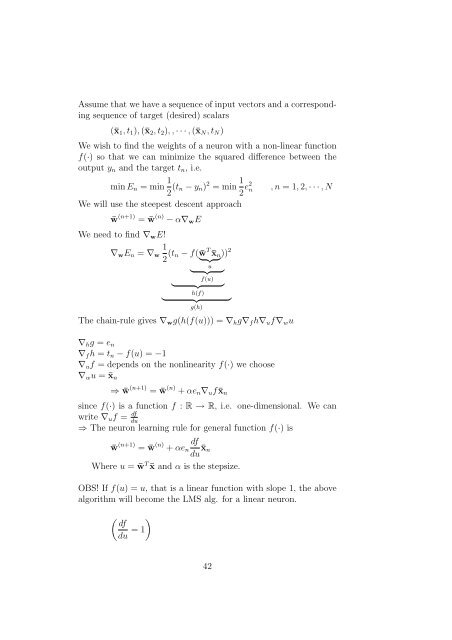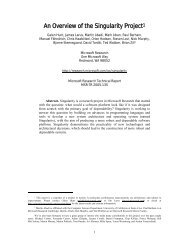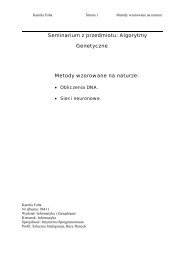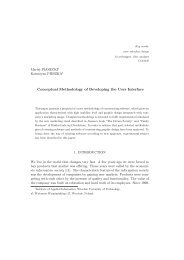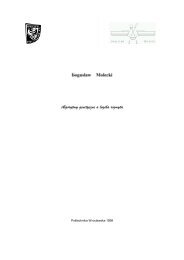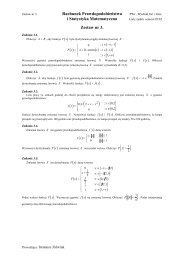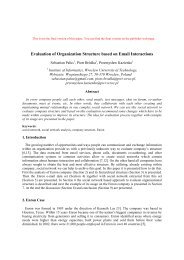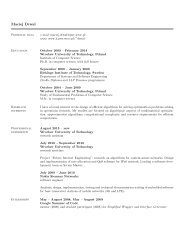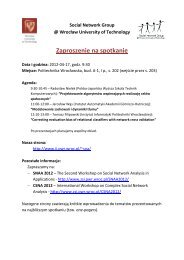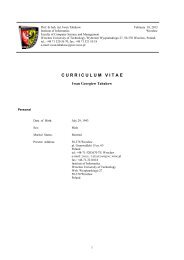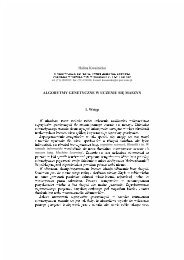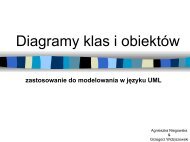Chapter 2 Introduction to Neural network
Chapter 2 Introduction to Neural network
Chapter 2 Introduction to Neural network
Create successful ePaper yourself
Turn your PDF publications into a flip-book with our unique Google optimized e-Paper software.
Assume that we have a sequence of input vec<strong>to</strong>rs and a corresponding<br />
sequence of target (desired) scalars<br />
(¯x 1 , t 1 ), (¯x 2 , t 2 ), , · · · , (¯x N , t N )<br />
We wish <strong>to</strong> find the weights of a neuron with a non-linear function<br />
f(·) so that we can minimize the squared difference between the<br />
output y n and the target t n , i.e.<br />
min E n = min 1 2 (t n − y n ) 2 = min 1 2 e2 n<br />
, n = 1, 2, · · · , N<br />
We will use the steepest descent approach<br />
¯w (n+1) = ¯w (n) − α∇ w E<br />
We need <strong>to</strong> find ∇ w E!<br />
1<br />
∇ w E n = ∇ w<br />
2 (t n − f( ¯w T ¯x } {{ n ) }<br />
u<br />
} {{ }<br />
f(u)<br />
} {{ }<br />
h(f)<br />
) 2<br />
} {{ }<br />
g(h)<br />
The chain-rule gives ∇ w g(h(f(u))) = ∇ h g∇ f h∇ u f∇ w u<br />
∇ h g = e n<br />
∇ f h = t n − f(u) = −1<br />
∇ u f = depends on the nonlinearity f(·) we choose<br />
∇ w u = ¯x n<br />
⇒ ¯w (n+1) = ¯w (n) + αe n ∇ u f¯x n<br />
since f(·) is a function f : R → R, i.e. one-dimensional. We can<br />
write ∇ u f = df<br />
du<br />
⇒ The neuron learning rule for general function f(·) is<br />
¯w (n+1) = ¯w (n) + αe n<br />
df<br />
du¯x n<br />
Where u = ¯w T ¯x and α is the stepsize.<br />
OBS! If f(u) = u, that is a linear function with slope 1, the above<br />
algorithm will become the LMS alg. for a linear neuron.<br />
( df<br />
du = 1 )<br />
42


